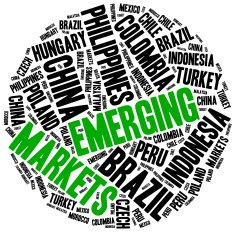Week 2: Emerging Markets

The principle of comparative advantage, which says that each country should specialize in the products that it can produce most readily and cheaply and trade those products for goods that foreign countries can produce most readily and cheaply. This specialization ensures greater product availability and lower prices. For example, India and Vietnam have a comparative advantage in producing clothing because of lower labor costs. Japan has long held a comparative advantage in consumer electronics because of technological expertise. The United States has an advantage in computer software, airplanes, some agricultural products, heavy machinery, and jet engines. Thus, comparative advantage acts as a stimulus to trade. When nations allow their citizens to trade whatever goods and services they choose without government regulation, free trade exists. Free trade is the policy of permitting the people and businesses of a country to buy and sell where they please without restrictions. The opposite of free trade is protectionism, in which a nation protects its home industries from outside competition by establishing artificial barriers such as tariffs and quotas. In the next section, we’ll look at the various barriers, some natural and some created by governments, that restrict free trade.
A closer look reveals that globalization has been the engine that creates jobs and wealth. Benefits of global trade include the following:
- Productivity grows more quickly when countries produce goods and services in which they have a comparative advantage. Living standards can increase faster. One problem is that big G20 countries have added more than 1,200 restrictive export and import measures since 2008.
- Global competition and cheap imports keep prices down, so inflation is less likely to stop economic growth. However, in some cases this is not working because countries manipulate their currency to get a price advantage.
- An open economy spurs innovation with fresh ideas from abroad.
- Through infusion of foreign capital and technology, global trade provides poor countries with the chance to develop economically by spreading prosperity.
- More information is shared between two trading partners that may not have much in common initially, including insight into local cultures and customs, which may help the two nations expand their collective knowledge and learn ways to compete globally
Course Competencies:
- Explain the importance of analyzing external and internal environmental factors ( Culture, Finance and Economy, Political and Legal and Marketing factors) .
- Analyze various outcomes that will present challenges to a variety of countries and the impact of interdependence of those countries.
- Analyze the impact management decisions/strategies have on the global world.
- Evaluate and identify appropriate remedies based on business strategy
Learning Objectives:
- Compare and contrast the emerging markets within developing world with the developed world
- Illustrate the current state of international economic cooperation among nations
- Define is regional economic integration?
- Discuss how the United Nations (UN) and the World Trade Organization (WTO) impact global trade
To-Do List:
- Read Chapters 3 and 4 in Global Business Management
- Week 2 General Discussion
- Week 2 Reading Quiz: Chapters 3 & 4
- Week 2 Group Collaboration
- Week 2 Progress/Peer Review Discussion
Sources:
Authors: Lawrence J. Gitman, Carl McDaniel, Amit Shah, Monique Reece, Linda Koffel, Bethann Talsma, James C. HyattPublisher/website: OpenStax
Book title: Introduction to Business
Publication date: Sep 19, 2018
Location: Houston, Texas
Book URL: https://openstax.org/books/introduction-business/pages/1-introduction
Section URL: https://openstax.org/books/introduction-business/pages/3-2-why-nations-trade